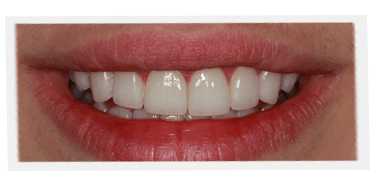
Crowns
Patients in the Toronto area requiring dental crowns can rely on the expertise of Dr. Ed Phillips. Dr. Philips is an outstanding cosmetic dentist that will make every effort to give you a personal experience that is sure to improve your quality of life. This is very important because a trip to the dentist can be stressful if you have had a bad experience or have anxiety about an upcoming procedure such as getting a crown. Patients receiving crowns can expect at least two visits and the process can take a little time consuming, but a skilled dentist can perform the procedure easily and painlessly.
When does a patient need a crown?
The road to needing a crown is littered with tiny morsels of food that have escaped the deft snares of floss from days past. These leftovers that are not caught and removed, contribute to plaque and decay that erode the enamel of your teeth over months and years. When the decay has created a small fissure in your tooth, the hole must be cleaned out and filled with a porcelain compound to stop the decay. Patients ignoring tooth decay and avoiding fillings will see their cavities grow to sizes that eventually cannot be filled. For these large cavities, a crown is required. Crowns involve grinding the tooth down to something that resembles a small peg, then placing an artificial cap over the remaining exposed tooth. This is a common procedure and is usually the last option before requiring a root canal.
Will a crown prevent me from needing a root canal?
There are circumstances where having a crown installed could help you to avoid a root canal. The enamel at the heart of your teeth forms a barrier between the surface and the nerve ending that runs up and into the center of your teeth. Patients with decay that has not yet broken through the bottom of the tooth enamel and exposed the nerve can usually be good candidates for a crown. The key is having enough of the good tooth left to shape a peg for the crown to successfully rest on top of when fitted into place. Skilled dentists like Dr. Ed Philips can clean up the remainder of your tooth and even create a build-up if necessary to provide the needed peg. Unfortunately not all crowns effectively prevent the need for root canals and occasionally a patient may require a root canal even after getting a crown if the enamel is weak or cracked at the nerve ending.
Crown procedure
Shaving the tooth
A skilled dentist knows just how much of the tooth that needs to be removed in order to create a strong crown that will protect the remaining tooth. On average the tooth will need to be ground down by about two millimeters on all sides and tapered slightly, but symmetrically on all sides so that the crown can slip down over the remaining tooth.
Building up the tooth
Sometimes after all edges have been ground down and any decay has been removed, the tooth that remains is too small or is no longer tall enough to be used for the crown. When that happens, dentists will “build-up” the damaged tooth with filling material so that the crown will be able to fit snugly down over it.
Creating the impression
The shaved tooth will be cleaned and dried, then the gum tissue around it will be gently pushed back to expose more the tooth. When that has been done, there will be a series of liquid materials dabbed around the tooth and in a tray that the patient will bite down on for a few minutes. There is a chemical reaction between the liquids that creates putty that will harden into an impression of both the tooth in question and the entire jawline to establish a bite pattern.
Placing the temporary crown
The hard work has been done at this point and the dentist will take a preformed shell and shape it to your tooth. They will place it with temporary cement which can be easily removed when the patient returns to have the permanent crown placed. This temporary crown will stand up to normal wear and tear until the permanent arrives.
Permanent fitting
The patient will return when the permanent crown has been received from the dental lab. This second procedure may require a slight amount of anesthesia so that the dentist can free the temporary crown and clean any excess cement from the remaining tooth. After the crown has been installed, the patient will clench their teeth for a few minutes to solidify the bond and will then be given a few tests to ensure the bite pattern is identical to the previous one.
Recovery
For the most part the final visit in a standard crown procedure does not cause much trauma to the affected area in the patient’s mouth. There will be a numbness that must wear off from the anesthetic, but any discomfort should be minor. Good dentists will warn patients to abstain from sticky or hard foods for a day or two to give the crown cement ample time to form a solid bond. The patient may experience some sensitivity in the area to hot and cold liquids, but this should subside over time.
Crowns are a normal procedure these days and technology has helped them become virtually pain-free. Dr. Ed Philips and his staff in Toronto have a state-of-the-art studio where patients can receive crowns and other dentals services in an atmosphere that resembles a spa. These sorts of amenities and the technology to rapidly fix any and all dental issues make his practice an excellent choice for anyone in the GTA that might need dental work.



